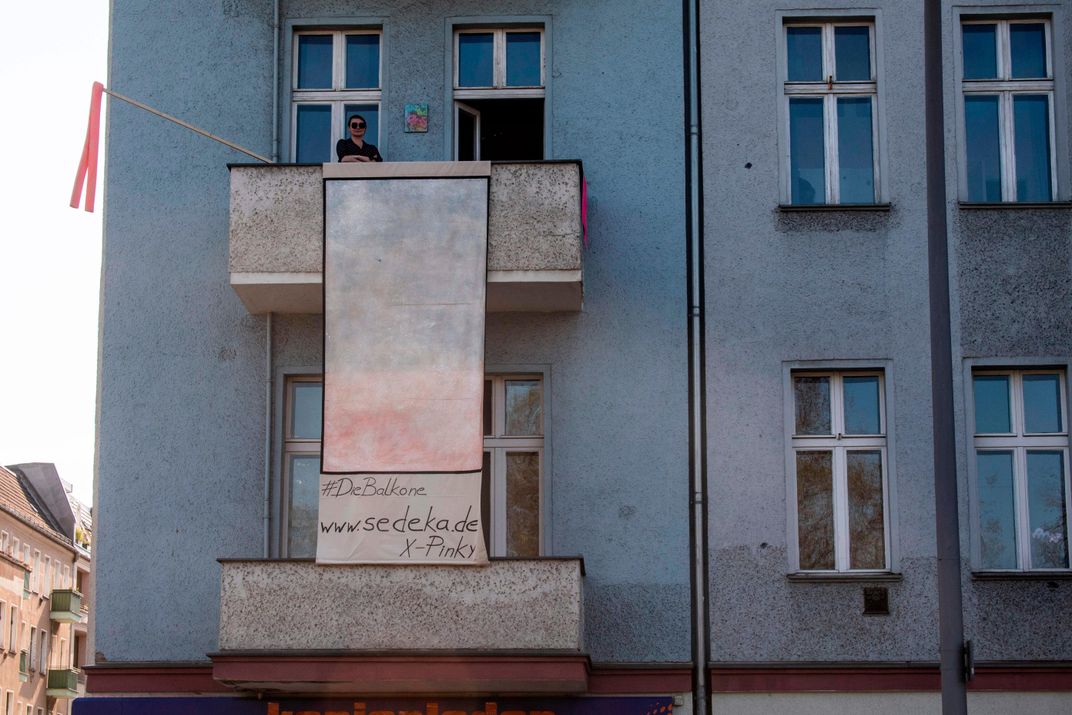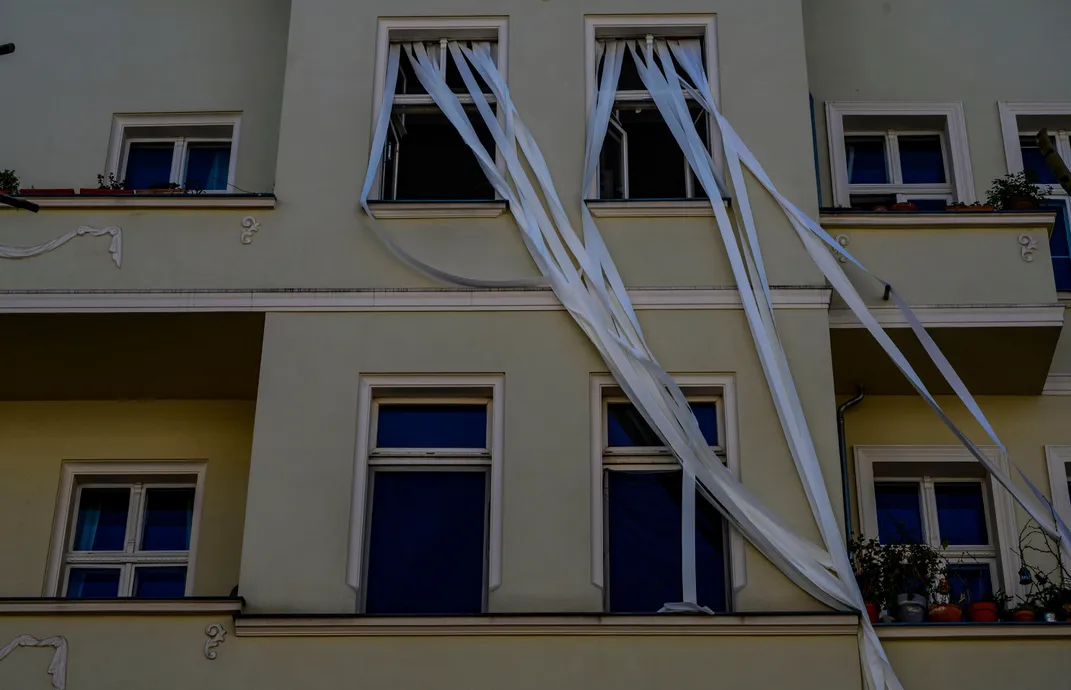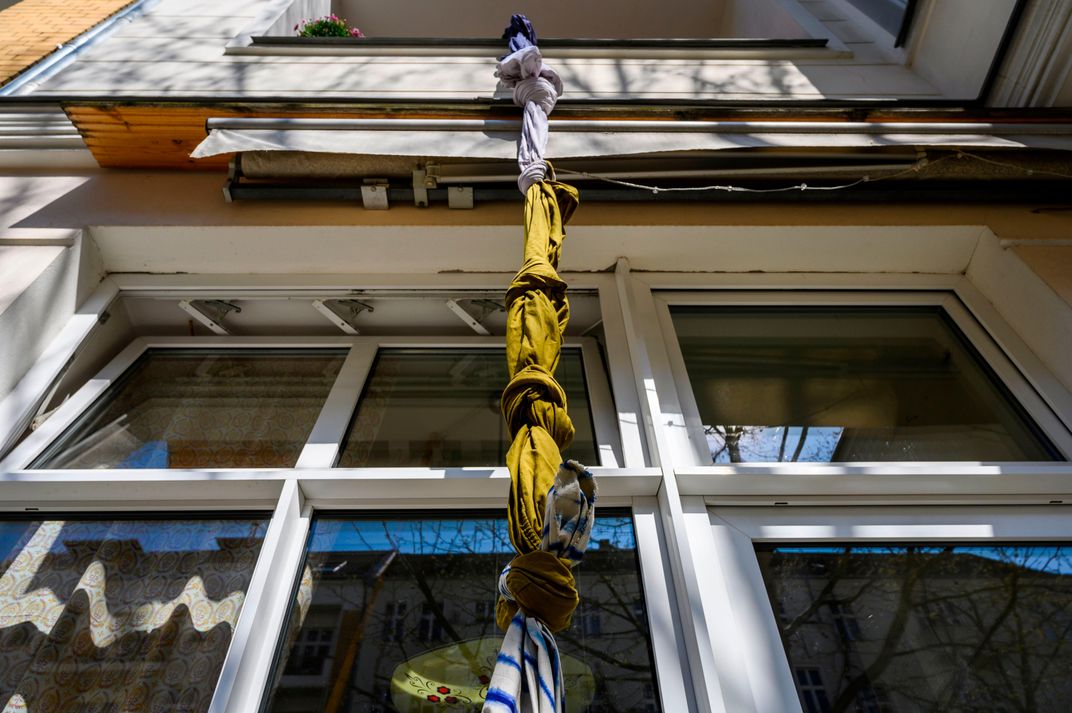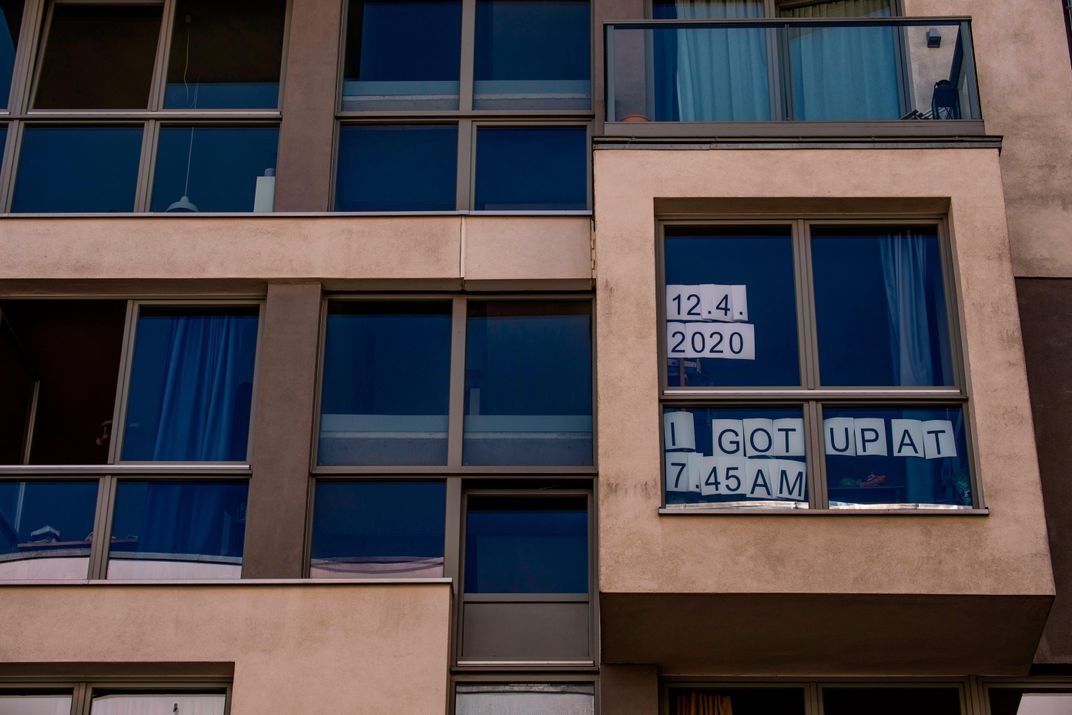Berlin Artists Turn Their Balconies Into Mini Galleries
Some 50 artists around the Prenzlauer Berg district displayed works of art for passersby to enjoy
/https://tf-cmsv2-smithsonianmag-media.s3.amazonaws.com/filer/3b/a5/3ba56c32-c93c-4a15-a5d4-fb508a4037ad/gettyimages-1209782088.jpg)
On Sunday and Monday, quarantined artists, curators and writers transformed balconies in Berlin’s Prenzlauer Berg neighborhood into miniature art galleries. About 50 creatives took part in the impromptu exhibition, organized by curators Övül Durmusoglu and Joanna Warsza and dubbed “Life, art, pandemic and proximity,” according to Kate Brown of artnet News.
Though Berlin is under lockdown measures until April 19 at the earliest, residents out for walks were able to view the temporary artworks by following a map created by Durmusoglu and Warsza. The map avoided laying out a specific route to avoid crowding, but printouts of the letter “B” at eye level alerted people when to look up, reports artnet News.
“Balconies serve as the public apertures of the private,” the curators wrote in a statement accompanying the map. “They seem to be where the house ends, and yet not. In their political history, they have both been terraces of openness and hope, as well as platforms for authoritarianism and supremacy.”
The trendy Prenzlauer Berg neighborhood—part of Berlin’s Pankow district—is known for its creatives and coffee shops. Installations included in “Life, art, pandemic and proximity” ranged from a rope made of tied-together fabric to black-and-white photographs of balconies in other cities and poetry clipped to clotheslines.
Per Agence France Presse, one artwork featured toilet paper streaming down from a pair of fourth-story windows—a reference to Germans’ initial rush to stock up on the commodity when the pandemic arrived in Europe. Paper printouts posted in another window alluded to Japanese conceptual artist On Kawara’s Today Series, which comprises more than 1,900 canvases painted with a deep blue, grey or red background and white text stating the day’s date. The Berlin signs, in comparison, read, “12.4.2020 / I got up at 7:45 am.”
As art historian Anne Rorimer wrote for the Art Institute of Chicago Museum Studies journal in 2014, the Today Series seeks “to depict the notion of time itself”—a concept likely to resonate with those spending all of their time at home, with few activities to differentiate weekdays from weekends.
“Lockdown doesn’t mean to lock in our thoughts,” artist Raul Walch, who hung blue-and-white floating sculptures from his balcony, tells artnet News. “Art and artists will always find new ways of going public.”
With galleries around the world temporarily closed in response to the pandemic, artists are finding new ways to share their art with audiences. The curbside trend now spreading across Europe began in Italy, where musicians performed an impromptu concert from their balconies in mid-March. In Spain, meanwhile, the Reina Sofía museum has partnered with a confederation of European cultural institutions to recruit 14 artists tasked with creating special balcony artworks.
In an opinion piece published by artnet News, the 20th-century art museum’s director, Manuel Borja-Villel, calls for a plan to help the cultural world rebuild when the current situation stabilizes.
“There will be a ‘before’ and an ‘after’ this crisis. It will be a paradigm shift, just as everything changed after World War II,” he writes. “… We will need something like a Marshall Plan for society and, of course, for culture—not to rebuild things as they were, but rather to imagine new worlds in which caring for other people and other species should be central.”



